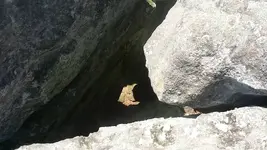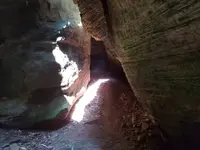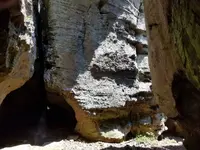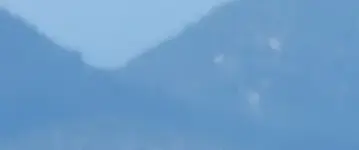This is straight from the mountainaire ranger district web site
Skip to main content
United States Department of Agriculture Forest Service Cibola National Forest and National Grasslands
Forest Service Home About the Agency Contact the National Office
Search
Go
Site Map
Cibola National Forest and National Grasslands
Home
Special Places
Recreation
Alerts & Notices
Passes & Permits
Maps & Publications
Land & Resources Management
Learning Center
Working Together
About the Forest
Contact Us
Offices
Districts
Employment
About the Area
News & Events
Contact Information
Cibola National Forest & National Grasslands
2113 Osuna Rd. NE
Albuquerque, NM 87113
Phone: 505-346-3900
Steve Hattenback
Forest Supervisor
Steve Hattenbach
Public Affairs Officer
Donna Nemeth
Black Kettle/McClellan Creek National Grasslands
District Ranger:
Tom Smeltzer
Phone: 580-497-2143
Kiowa/Rita Blanca National Grasslands
District Ranger:
Mike Atkinson
Phone: 575-374-9652
Magdalena Ranger District
District Ranger:
Kim Obele
Phone: 575-854-2281
Mountainair Ranger District
District Ranger:
Jay Turner
Phone: 505-847-2990
Mt. Taylor Ranger District
District Ranger:
Alvin Whitehair
Phone: 505-287-8833
Sandia Ranger District
District Ranger:
Crystal Powell
Phone: 505-281-3304
Contact Us
Mountainair Ranger District
Mountainair RD 2016
Extreme Fire Danger
Jay Turner, District Ranger
Address: 40 Ranger Station Rd, Mountainair, NM 87036
Mailing Address: PO Box 69, Mountainair, NM 87036
Phone: 505-847-2990
Fax: 505-847-2238
___________________________________________________________________
The Mountainair Ranger District is made up of the Gallinas and Manzano Mountains. The Manzano Mountains are located primarily in Torrance County with a small section on the west side of the mountain located in Valencia County. The Gallinas Mountains are located in both Torrance and Lincoln Counties. Among the many attractions of the Manzano Mountains is the largest stand of Rocky Mountain large tooth maples in New Mexico at the head of Tajique Canyon.
Fourth of July
Communities and Partners
Small, predominantly Hispanic communities, (most of them land grant communities), surround the Manzanos. The area in general is agriculturally based, with very close ties to the land. Local residents place high value in their heritage and ties to the mountains. Uses include grazing, firewood, recreation, herb gathering and scenery in the watersheds that feed the surrounding communities. The result of urban sprawl is a rapidly growing wildland urban interface all around the Manzano Mountains. The community of Corona is the closest village to the Gallinas Mountains. This is a small, rural village that primarily uses the Gallinas Mountains for hunting, firewood and grazing.
Another collaborative effort on the Mountainair Ranger District is working together with our neighboring Isleta Indian Reservation. We share a common boundary, which we cooperate to maintain. Our participation with Urban Forestry has included working as partners with local schools, Claunch-Pinto, East Torrance and Edgewood Soil and Water Conservation Districts, Natural Resources Conservation Service and New Mexico State Forestry.
Trigo Canyon
Manzano Mountain Wilderness
Don't let this area deceive you. It looks devoid of scenery from a distance, but is full of surprises as you explore the trails. The same held true in the early 1700s, when explorers visiting a small village on the eastern edge of these mountains discovered very old manzanos (apple trees), a fruit tree not native to this country. The name Manzano was given to the area due to the discovery of the old apple trees.
Spread out across the western slope of the Manzano Mountain Range, this wilderness varies in elevation from about 6,000 feet to 10,098 feet atop Manzano Peak. Pinion and Juniper grow low, gradually submitting to ponderosa pine and then spruce, fir and aspen higher up. This is steep and rugged terrain for the most part, cut with canyons and marked with outcroppings of rock. Thousands of raptors migrate along the Manzanos in spring and fall as they work their way between Canada and Mexico.
More than 64 miles of a well-developed trail system provide access to the Wilderness, although the lack of reliable water sources and campsites may explain why so few people take advantage. One hike starts at Fourth of July Campground near the eastern boundary and leads 1.5 miles to the crest of the area. From there, a trail runs along the crest for 22 miles to Manzano Peak.
Range and Grazing
The Mountainair Ranger District currently oversees 19 active grazing allotments, 10 allotments on the Gallinas Unit and 9 on the Manzano Unit. Most grazing allotments are grazed seasonally with a rotation schedule based on an allotment management plan developed by the district and the permittee. Allotment management plans are developed in order to enhance and protect such things as watershed management, wildlife habitat, recreational demands as well as other concerns.
Deer in the forest.
Wildlife
Mule deer, a small population of elk, black bear, mountain lion, turkey and pronghorn antelope are all common game species found on both the Gallinas and Manzano Mountains. An array of birds including small European falcons (kestrels) and golden eagles and small mammals can also be found throughout most of the district. Sensitive, threatened, and endangered Mexican spotted owl habitat can be found on the district and some Northern Goshawks are also present. The lack of permanent fresh water on the district detracts from many permanent fisheries but the Tajique creak is stocked with trout seasonally by the New Mexico Game and Fish Department.
Forestry and Timber
The district has a very active forestry program with many permits sold and contracts awarded each year. In the 2 prior years the district sold approximately 491 permits during the Fiscal Year 2010 and 353 permits so far in Fiscal Year 2011 for a total of 4181 cords of personal use firewood. The district also hosts an active collaborative forest restoration project with the Manzano Land Grant. Christmas tree permits are not currently offered on the Mountainair Ranger District.
Fire Management
The Mountainair Ranger District has a very active fire management program. Along with regular wildfire supression duties, our fire staff is very active in planning and implementing a prescribed fire program. This is done in order to support ecosystem management in a fire dependent ecosystem as well as provide or improve wildlife habitat and protection of the wildland urban interface. Two type 6 wildland fire engines are fully staffed seasonally along with a prevention officer and seasonal staffing of both Capilla and Gallinas lookouts.
Cultural Resources
There is a long, rich history of human occupation of the lands managed by the district. Archaeological and historic sites are evidence of the diverse use of the lands spanning several thousand years. These resources are fragile and irreplaceable. Federal law prohibits disturbance to sites, and removal or artifacts from sites.
Mountainair YCC 2017
Environmental Education
In the area of environmental education our district participates in both community and school events. Our activities include setting up displays and staffing booths to talk to students as well as adults to exchange information. We also participate in many school field trips and class presentations. Mountainair Ranger District sponsors a seven-person YCC crew in cooperation with The Forest Guild.
Trigo Canyon 2014
Quick Links
Fire Information
Mountainair Firewood Permits
Mountainair Fall Colors
Mountainair Recreation
Mountainair Travel Management
Manzano Mountain Trails Link opens in a Pdf Document
Tips on reporting suspicious activity on the forest Link opens in a Pdf Document
Alerts & Warnings
Sandia & Mountainair RD's to Close due to Fire Danger Effective 8:00 am 6/15/18
Magdalena RD enters Stage II Fire Restrictions for San Mateo, Datil & Magdalena
Black Kettle National Grassland Restriction Recension 5/23/18
Magdalena RD Stage I Fire Restrictions for Gallinas & Bear Mtns 5/25/18
Wood Permits Suspended on the Mt. Taylor RD
Mount Taylor RD Stage II Fire Restrictions - May 4, 2018
Rita Blanca National Grasslands Stage II Fire Restriction 3/26/2018
View All Forest Alerts
Forest Service Home | USDA.gov | recreation.gov | USA.gov | Whitehouse.gov
Plug-Ins | FOIA | Accessibility Statement | Privacy Policy | Important Notices | Information Quality







